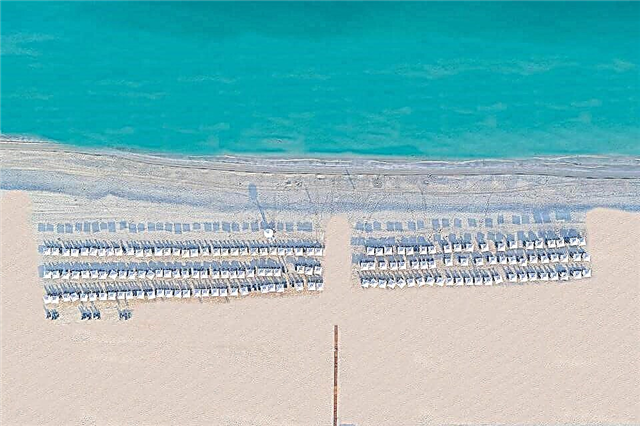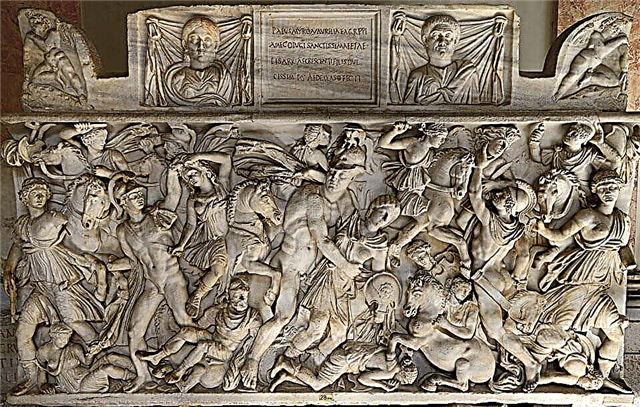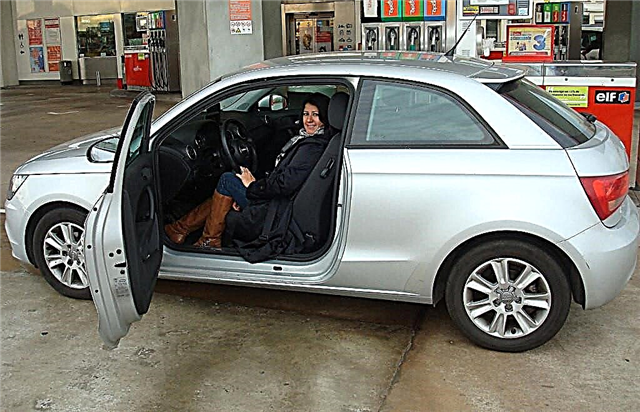Among the old buildings in Kostroma, a very picturesque temple, erected in the middle of the 18th century, has hardly survived by miracle. From the moment of its construction, it never stopped working and received believers even during the years of state persecution of the church. And in the middle of the 20th century, the temple had the status of a cathedral in the local diocese for more than three decades. For travelers, this church is of interest because it combines the traditions of pre-Petrine architecture, elements of the baroque and classicism style.
Church history
The wooden church, the predecessor of the brick church, stood in Kostroma since the beginning of the 17th century. According to the surviving documents, it was built with the money of the first Russian tsar from the Romanov dynasty - Mikhail Fedorovich. Next to this church was another, winter one, named after the early Christian martyrs Frol and Laurus. As it was then accepted, it was small in size so that it was more convenient to heat it in the cold season. It is interesting that in Russia such a dedication of Christian churches is typical in places where nomads traded horses. And the street on which the temple stands is still called Lavrovskaya.

General view of the Church of St. John Chrysostom
The brick church was erected here in 1751, when stone construction was resumed in the city. This became possible thanks to donations from the local wealthy merchant Ivan Semenovich Aravin. As in the old wooden church, services in the new church were held only in summer. And in winter they continued to use the old warm church for church needs.
At the end of the 18th century, the new church underwent significant alterations. The local merchants, the Durygin brothers, allocated money, and two chapels appeared near the church, which were dedicated to the martyrs Florus and Laurus, the Tikhvin icon of the Mother of God, and also to Demetrius of Thessaloniki. It is known that the lighting of the new warm side-chapels took place in 1791.
The Durygin brothers were very rich, they owned a large linen manufactory in Kostroma, and the eldest of them, Dmitry, was the mayor at that time. At their expense, a high bell tower appeared on the west side of the church. And the old wooden winter temple was demolished due to dilapidation and uselessness. At the same time, the parish parish cemetery was also dug down.
Documentary information about the ministers of the church has survived only from the second half of the 19th century. Since 1867, for half a century, the priest of the temple was Father Stephen (Smirnov) - in the Kostroma diocese, a very famous and respected figure. At the beginning of the 20th century, there were 320 people in the parish of his church. The parish consisted of Kostroma peasants, burghers, officials, artisans, linen factory workers and small traders.

View of the Church of St. John Chrysostom from Lavrovskaya Street
With the onset of Soviet power, the temple was not closed. Its priest was Archpriest Pavel (Knyazev), who led the parishioners in very tragic times for Orthodoxy. Churches were closed everywhere, and the state persecuted almost all the clergy. In 1922, when the authorities massively confiscated church valuables, more than 100 kg of silver was taken out of the St. John Chrysostvo Church - old frames for icons, icon lamps and vessels for worship. Archpriest Paul was arrested several times and kept in prison. The last arrest of the priest came in 1938. He was convoyed to Kazakhstanwhere in May 1940 Father Pavel died in exile.
Since 1929, for 35 years, the temple had the status of a cathedral in the local diocese. It kept the main Orthodox shrines - the unique miraculous image of the Fyodorovskaya Mother of God, ancient icons and books, the clothes of priests and liturgical utensils, which were taken out of the closed Kostroma churches.
At the beginning of December 1936, Nikodim (Krotkov), Bishop of Kostroma and Galich, held his last service in the St. John Chrysostom Church. Upon returning home, he was arrested and placed in a Kostroma prison. Here the priest spent more than 20 months and died in August 1938.
In the early 1960s, the government attempted to close the church. This was a new wave of liquidation of Orthodox churches in Russia, which took place under N.S. Khrushchev. To implement this plan, at first, by decision of the authorities, the bishop's chair was moved to Temple of the Resurrection on Debra... However, after the resignation of N.S. Khrushchev (1964), the anti-religious campaign was gradually curtailed, and the church on Lavrovskaya Street still remained active.

Architecture and interior decoration
The church appeared in the city when the old techniques of architecture were replaced by the Baroque style in the architecture of religious buildings. Therefore, all styles used in the middle of the 18th century are reflected in its appearance. The basis of the temple is a high three-height quadrangle, which is crowned with a five-domed one. Above the altars of the warm side-chapels, there are also church domes installed on octagonal drums. The three-tiered bell tower, completed with a spire, the altar apses and the refectory, were built in the style of classicism. And the church fence with openwork metal bars and gates appeared around the temple in the second half of the 19th century.
The facades of the church itself and the building of the refectory are decorated laconically and modestly. The windows are partially framed by profiled platbands. On the eastern façade there are niches with images of saints inside. The bell tower facades are more richly decorated. There are triangular porticos, columns and round light holes - lucarnes.
Inside the temple, an oil painting has been preserved, most likely made in the middle of the 19th century. Later, these paintings were corrected and renewed many times. They depict Christian saints and evangelists, as well as various scenes from the Old Testament. The plots of the paintings on the vaults in the refectory were the Twelve Great Holidays. The temple also has examples of murals imitating stucco decoration - ornamental rosettes and frames.

Inside the church there is a large five-tiered iconostasis, the body of which is painted with green paint, and the overlaid carving and columns are gilded. Part of the iconostasis was made at the end of the 18th century, and some, like the icons, were created a century later. The main icon of the temple - "John Chrysostom" was painted earlier, as art historians suggest, at the end of the 17th century. In the warm church side-altars, there are two-tiered carved iconostases. All their elements are traditional for baroque iconostases, which were made by master carvers in the second half of the 18th century.
The current state of the temple and the visiting regime
The church has been well restored and is a real decoration of the surrounding quarters of Kostroma. Its facades, as well as brick fence posts, are pink and white, and the roofs and domes are painted green. The temple is active, and services are regularly held in it. A Sunday school has been set up at the church for the children of parishioners. Anyone can get inside the temple, it is open on weekdays from 7.30 to 12.00, and on Saturdays, Sundays and holidays - from 7.30 to 19.00.
The ancient icon "John Chrysostom" and the Polonskaya icon of the Mother of God are especially revered shrine of the temple. Patronal holidays are celebrated here on February 9 and 12, September 27 and November 26.
How to get there
The church is located on the street. Lavrovskaya, 5.
By car. The road from the capital to Kostroma takes 4.5-5 hours (346 km) and runs along the Yaroslavl highway and the M8 highway (Kholmogory). In Kostroma on the road bridge you need to move to the left bank of the Volga and get to st. Soviet. At the crossroads, turn left and drive along Sovetskaya, Smolenskaya and Sennaya streets until the intersection with ul. Lavrovskaya. The temple is located 200 meters from the intersection of Lavrovskaya and Sennaya streets.

By train or bus. From the Yaroslavsky railway station to Moscow trains reach Kostroma in 6.04-6.35 hours.In addition, from the Central Bus Station of the capital, located near the Shchelkovskaya metro station, you can get to Kostroma by regular buses (7 trips a day). This journey takes 6.50 hours. The Kostroma bus station is 1 km away from the railway station. You can get to the temple in the city by bus # 21, trolleybus # 7, as well as shuttle buses # 21, 48, 49, 51, 56 (to the stop "Grazhdanproekt").
Attraction rating:











